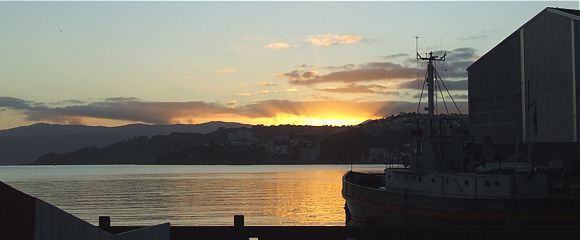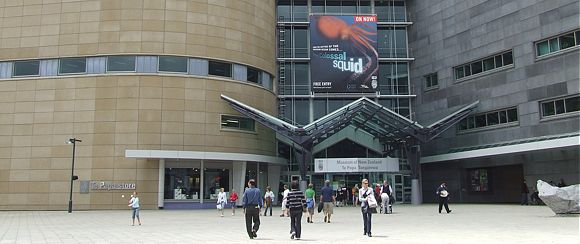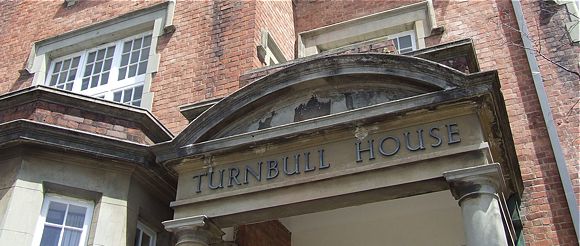|
Zeitblick
- Series
|
| City,
My City - Series Four By Peter Wells |
|
Historic Wellington - Many of the stories about Wellington told on Zeitblick have a historical theme to them. Like many cities around the world, Wellington has a number of places, structures and sites which have an interesting story behind which often goes back to the actual origins of the city itself. In order to look into some of these origins Series Four of "City, My City" investigates the circumstances and the people who together brought them to reality. |
Series 4 / Part 1 |
Series 4 / Part 2 |
Series 4 / Part 3 The Dominion Museum - Then and Now
Wellington is a city of culture, of art, of learning and of sport. Within its small circumference and its local environs one finds, among other things, two universities, several technical colleges, a collection of large and small art galleries and a range of national, regional and local museums. In addition such events as the New Zealand "World of Wearable Arts" show, the New Zealand leg of the "Rubgy World Sevens", the "World Beach Volleyball Series", the "Summer City Festival" and the "Fringe Festival" all make popular annual appearances. The Dominion Museum has played a key role in this aspect of the city since 1865 and this is its story. |
Series 4 / Part 4
Part of the developing character of every city must be to proudly cherish the memory of those who have helped it become what it is today and what it will be. This unique nature is built on the legacies and memories of those who have gone before, held dear by its residents and administrators. One such legacy that, while a national treasure, is also a Wellington icon is the library of Alexander Turnbull. Manic collector and bibliophile he may have been but had it not been for this man many of the literary treasures that this country now owns would have been scattered in libraries throughout the world or even lost to mankind forever. |
Series 4 / Part 5 Parks and sports grounds are more often built by the hand of man by means of filling in valleys, levelling off hills and clearing forests. To have one built by the forces of nature must be somewhat rare, but this was how Wellington's Basin Reserve came into being. The area was a lake when the first settlers arrived in 1840 but a huge earthquake 15 years later raised the lake-bed to ground level leaving swampy but relatively useable, and valuable, land. It has become New Zealand's most historic sports ground and has been used for a variety of purposes over the years. Let us take a short walk through historic Wellington to see how the Basin Reserve has changed from swampy lake to iconic cricket ground. |
Series 4 / Part 6 19th century Britain was well known for its provision of hospitals and infirmaries - places of healing - and it would have been reasonable to expect that this progressive approach would be seamlessly transplanted into the new colony of Wellington. Such things are not always clear-cut, however, and it was to take a number of years before a purpose-built hospital was established here. The development of Wellington Public Hospital from the humble New Zealand Company Infirmary on the beach at Petone in 1840 to the fully established, viable and successful Regional Hospital we have today is an interesting story. This is the story of that development, of the pitfalls encountered, of the successes achieved and of the establishment of something we citizens of Wellington think of as our own - our Wellington Public Hospital. |
Series 4 / Part 7 Whilst one might have hoped that a new colony such as Wellington, half a world away from the United Kingdom, might provide something akin to an earthly paradise - a South Pacific Eden - for those wishing to make a new start in life it became, in fact, a transplanted microcosm of its parent country. As such the early colonists brought with them their class structures, their religious and social beliefs and prejudices as well as the inevitable criminal element. Thus Wellington found an almost immediate need for a police force, a penal system and a prison. Obviously, as New Zealand was a colonial outpost of Great Britain, it was natural for the laws and legal framework of that country to be applied to the new colony. It was quickly found that, "Even in this Eden", there was a requirement for a justice system to protect the city from the inevitable criminal undercurrent. |
Series 4 / Part 8 Where best to look at the heavens than from the top of a hill where, in your imagination, you are closer to the stars, even if not physically nearer? In reality, though, the reason for building observatories high above the surrounding landscape is to escape the light pollution which, as cities and towns grow, becomes worse and worse. These were the places where early scientists and governments built those buildings whose purpose required as much absence of unnatural light as possible, ensuring a clear view of the heavens. In Wellington this location is up in the western hills near the top of the Cable Car. At this location may be seen a number of historic and modern buildings whose role over the years has been to record time and to map the stars and, more recently, to educate and enlighten both young and old. I don't know if this area has a name beyond the Botanic Gardens but if it ever did "Observatory Hill" might be appropriate. |
Series 4 / Part 9 Relics, ruins and historic locations are common to all countries around the world. Many countries may boast thousands of years of history and historic sites that hark back to those very early times while others such as the United States and Australia still measure their pedigree by a mere few hundred years. At a scant 170 years this makes New Zealand the "new kid on the block" and while we don't have ancient castles, crumbling ruins or buried treasure, we do have notable locations which mark key moments in our history. The fortified locations of Wellington, and by extension the rest of New Zealand, are examples of these locations and each of these, coupled with other significant sites built for different purposes, tells of important steps in the development of this nation. From the "apron strings" of colonialism to the obedience of dominion and the autonomy and complete independence of nationhood, New Zealand has won a respected place in the world and it has often been said that we are a small nation who "punches above its weight". The fortresses of Wellington, along with those in our other cities, are part of the development of this attitude to life. |
Series 4 / Part 10 the english language is called a cemetery derived from the greek word for dormitory or a place to sleep. Cemeteries are common throughout the world and Wellington is no different. This story takes a brief look at the history of some of the cities most important cemeteries, where they are, how they were established and what has happened to them over the years. |


